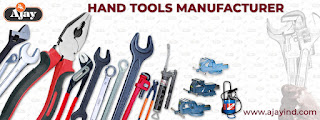In the realm of mechanics and repair, precision is paramount. Two indispensable tools that epitomize precision and versatility are the bearing puller and the combination plier. These unassuming tools play pivotal roles in extracting bearings and executing multifaceted tasks with finesse. Yet, behind their unassuming exteriors lies the craftsmanship of hand tools manufacturers, whose dedication and innovation bring these tools to life. In this blog, we will delve into the intricate world of bearing pullers and combination pliers, unveiling the artistry and expertise of hand tools manufacturers.
Bearing Pullers: The Pursuit of Delicate Mastery
A bearing puller, a tool designed for the meticulous task of removing bearings without damage, is a testament to precision engineering. Bearings, crucial components found in various machinery, demand careful handling during extraction to preserve their integrity and functionality.
Manufacturers of bearing pullers undertake the challenge of designing tools that extract bearings with utmost delicacy. These tools feature specialized jaws that grip the outer ring of the bearing securely. The jaws are often equipped with fine serrations to ensure a secure grip while minimizing the risk of marring the bearing's surface.
What sets bearing pullers apart is their adaptability. Manufacturers offer a range of designs, including two-jaw, three-jaw, and hydraulic pullers. Each design serves specific bearing sizes and extraction scenarios. Hydraulic pullers harness fluid pressure for controlled force application, making them ideal for heavy-duty tasks.
The artistry of bearing puller manufacturer shines in the details. Some pullers incorporate a self-centering mechanism that distributes force evenly during extraction, minimizing the potential damage to the bearing and surrounding components. Ergonomic handles and user-friendly adjustment mechanisms enhance usability and user comfort.
Combination Pliers: Where Versatility Meets Precision
Combination pliers, often referred to as the jack of all trades, exemplify versatility in hand tools. These tools integrate gripping, cutting, and bending functionalities, making them indispensable companions for professionals across industries.
The genius of combination pliers lies in their design adaptations. Some models boast a pivot point closer to the jaws, enhancing cutting power. Serrated jaws enhance grip on slippery surfaces, showcasing manufacturers' dedication to creating tools tailored to real-world needs.
The Mastery of Hand Tools Manufacturers: Innovating Craftsmanship
Hand tools manufacturers epitomize the intersection of innovation and craftsmanship. These companies invest in research and development to refine designs and introduce advanced features that cater to evolving industry requirements.
Precision machining techniques are central to creating bearing pullers and combination pliers. Computer-aided design (CAD) software helps optimize ergonomic handles, jaw configurations, and adjustment mechanisms, ensuring tools are both functional and comfortable.
Materials play a pivotal role. Manufacturers select high-quality alloys, employing heat treatments to enhance durability and performance. Chrome plating and anti-corrosion treatments ensure tools withstand challenging environments.
Conclusion
Bearing pullers and combination pliers are unassuming heroes in the toolkit of mechanics and professionals. These tools embody the synergy of innovation and craftsmanship, a tribute to hand tools manufacturers' relentless pursuit of excellence. With professionals relying on bearing pullers for delicate bearing extraction and combination pliers for diverse tasks, it's essential to recognize the artistry behind their creation. These tools go beyond functionality; they symbolize precision, innovation, and the unwavering commitment of hand tools manufacturers to craft tools that shape our world.




.jpg)
.jpg)